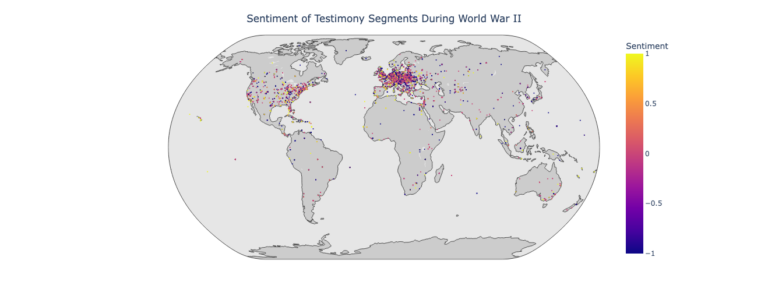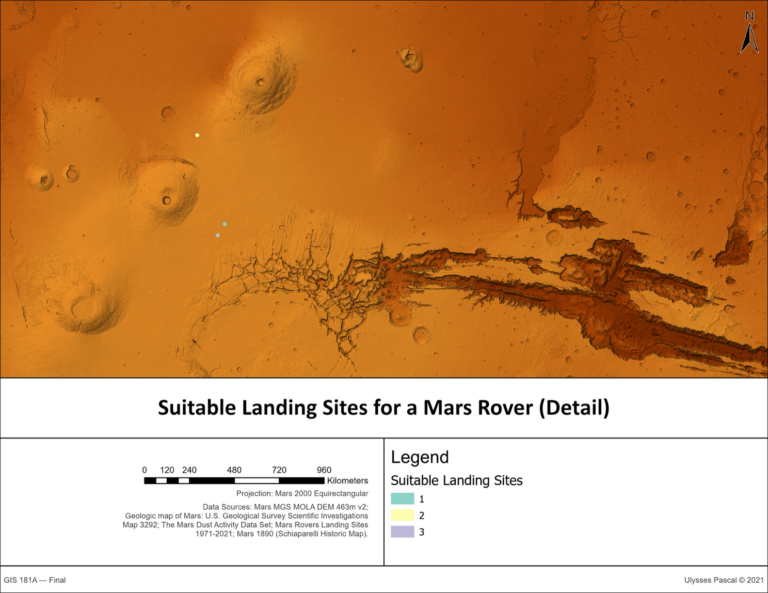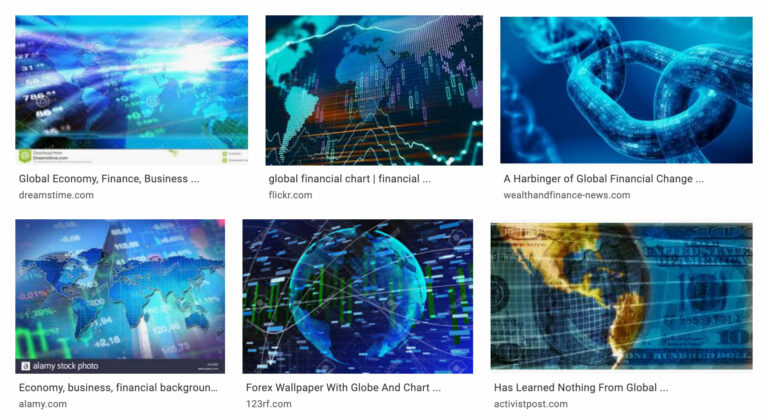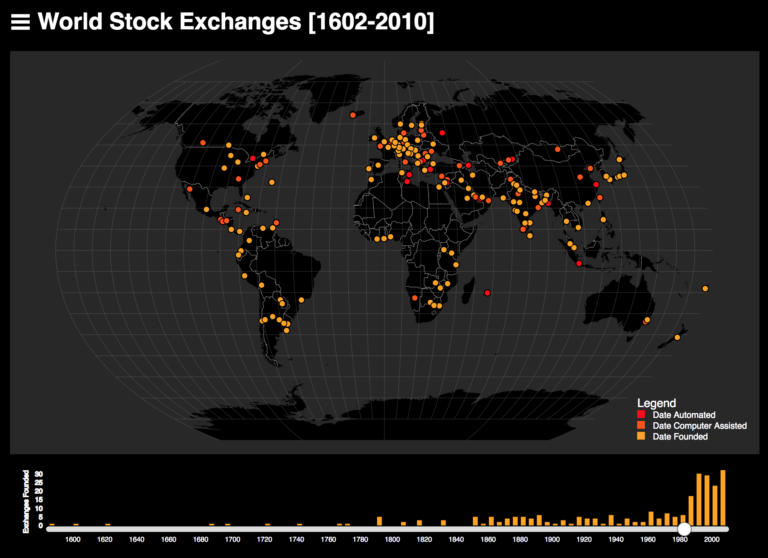Geographies of Affect–Place and Sentiment in Holocaust Testimonies
Contemporary sentiment analysis tools lack the level of nuance and dedication to detailed description that Boder exhibited. Sentiment analysis tools are limited in multiple dimensions, including inabilities or ineffective accounts for tone, sarcasm, negations, comparatives, and multilingual data, and these weaknesses are enhanced especially when applied to complex texts in digital humanities. For this capstone project we tested different implementations of sentiment analysis to compare their affordances and limitations. I compared GPT-3 with GPT-2 and GPT-2 Fine tuned. I then mapped the results to visualize the geographic distribution of sentiment before during and after World War II.Read More
Revisiting Schiaparelli’s Martian Canale
For Geography 181A (Intermediate GIS) I conducted an analysis of Giovanni Schiaparelli’s historic maps of Martian Canale. In this speculative project, Georectified Schiaparelli’s historic maps and combined them with contemporary remote sensing data regarding conditions on the Martian surface to identify suitable landing sites to study Schiaparelli’s Canale. Read More
NASDAQ IN THE NEWS [1969-1989]
For Introduction to Digital Humanities I used a combination of natural language processing, network analysis and mapping to tag historic news articles regarding the NASDAQ stock exchange and to map networks of associations in concordances of text. Read More
World Stock Exchanges
For Introduction to Digital Methods & Scholarship (INF STD 289) I developed a programmatic method to structure unstructured historical data regarding stock exchanges. Using Natural Language Processing (NLP) I extracted relevant dates and geographic locations. This data was then geocoded such that the locations and dates of historic stock exchanges could be mapped. My collaborator Laura Jara helped develop a controlled vocabulary to classify stock exchanges and, using a mix of programmatic and manual methods we annotated the data to identify shifts from face-to-face markets toward computerized exchanges. Read More



